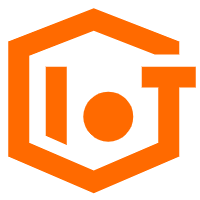By Shantanu Kaushik
Organizations have to maintain their business practices altogether while competing with an evolution cycle that induces a constant change and a rigorous cycle to maintain security, functionality, performance, and cost. These challenges can be handled with a set of practices.
IT Operations (IT Ops) and their effectiveness are directly proportional to the technological solutions available for the operations personnel. Every organization has a set of goals that they aim to achieve, and the best of strategies tend to encompass those goals. Seasoned cloud strategies and experienced professional teams can produce some of the best IT Ops trends for other organizations to follow. In this article, we will present some of the best practices you can implement within your organization to maintain and upgrade your IT Operations.
IDC predicts, “By 2024, over 50% of all IT spending will go toward digital transformation and innovation, up from 31% in 2018 and growing at a compound annual rate of 17%. As spending on innovation continues to rise, enterprises will also look for greater efficiency in their traditional ICT budgets by shifting to less labor- and capital-intensive operating models – most notably the cloud.”
Some of the predictions speak for themselves as they outline the trend based on strong analytical predictions. Today, cloud data centers provide a unified and centralized approach for IT operations. Most of the high-performance computing solutions run using data centers across the globe. A common example is an E-HPC solution.
IDC states, “By 2023, over 50% of new enterprise infrastructure deployed will be at the edge rather than corporate data centers, up from less than 10% today. Also, by 2024, the number of apps at the edge will increase 800%.”
Edge nodes can provide a much quicker service solution in a supercomputer-level deployment approach that is not power-hungry. Imagine a scenario where you have enabled continuous integration and continuous delivery (CI/CD), and your application sets are being delivered to edge nodes worldwide.
Gartner states, “By 2025, 50% of enterprises will have devised artificial intelligence (AI) orchestration platforms to operationalize AI, up from fewer than 10% in 2020.”
Whenever we talk about automation, the first thing that comes to mind is DevOps and Agile. Alibaba Cloud uses Packer for enhanced automation needs. Infrastructure operation practices like NoOps suggest automation at a level where operations become so highly automated that no manual intervention should be necessary for execution.
Gartner predicts, “By 2025, customers will be the first humans to touch more than 20% of the products and produce in the world.”
Gartner’s prediction is only possible with the most optimal level of automation without any human intervention throughout the process.
The concept of automation also extends toward automated O&M where most systems are high-tuned together to enable a self-sustaining architecture that supports the agile methodology. Automation architects will be the next big thing in IT, with demand already superseding any other position for IT firms. Automation architects can work as automation engineers and strategize scenarios that can lead to an immensely productive build to deploy application lifecycle.
IDC predicts, “By 2025, nearly 2/3 of enterprises will be prolific software producers with code deployed daily, over 90% of apps cloud-native, 80% of code externally-sourced, and 1.6 times more developers than today.”
Hybrid Digital Infrastructure Management (HDIM) is an emerging trend related to digital transformation to introduce hybrid IT infrastructure management for IT operations.
Gartner says, “HDIM addresses the key pain points of operational process, skills, and tools that come with hybrid infrastructures. At present, the HDIM market is in the very early stages of development, but 20% of enterprises are expected to use HDIM tools to optimize workload placement by 2022.”
Hybrid Digital Infrastructure Management (HDIM) helps monitor and analyze the IT infrastructure to access their impact on the performance and availability of your business applications. HDIM introduces a true concept of hybridity as it covers private, public, and hybrid-cloud infrastructure. We will discuss this further in an upcoming article.
Imagine a scenario where you are deploying service with a hybrid-cloud infrastructure. You have just finished outlining which services you want to move to the cloud and which you want to keep on-premises. HDIM can help you manage and maintain the efficiency of your application lifecycle by monitoring and providing crucial data for better availability and fine-tuning your resources. This helps save on extra costs and gives you a better-managed system altogether.
An organization can pull through resources by deploying using Alibaba Cloud’s host of services to cut down on your service start time. However, you will need a strong team that can validate all the practices and work through complexities to use the raw computing power and tools to enable business intelligence.
IT operations and management are an integral part of the whole IT deployment practice. Theories and practices, such as NoOps, suggest a highly automated operations practice that requires no human intervention. On the other hand, concepts like DesignOps are making their way into the whole IT sphere. Here, integrating the design aspects as a service can make a considerable difference towards industrial designs, allowing designers to focus on design while the rest is managed.
Alibaba Cloud is leading the charge by adopting the latest trends and practices by going further into the open-source community and making their products easily accessible through SDKs and APIs.
I want to leave you with one thought after reading this article. IT Ops should be an open-ended model, where your personalized IT Ops practice leaves you the room to adopt and adapt to newer practices.

2,593 posts | 790 followers
FollowAlibaba Clouder - March 29, 2021
Alibaba Clouder - March 29, 2021
Alibaba Clouder - March 24, 2021
Alibaba Clouder - December 25, 2020
Kidd Ip - July 21, 2025
Alibaba Cloud Community - February 3, 2022

2,593 posts | 790 followers
Follow Link IoT Edge
Link IoT Edge
Link IoT Edge allows for the management of millions of edge nodes by extending the capabilities of the cloud, thus providing users with services at the nearest location.
Learn More Microservices Engine (MSE)
Microservices Engine (MSE)
MSE provides a fully managed registration and configuration center, and gateway and microservices governance capabilities.
Learn More DevOps Solution
DevOps Solution
Accelerate software development and delivery by integrating DevOps with the cloud
Learn More Alibaba Cloud Flow
Alibaba Cloud Flow
An enterprise-level continuous delivery tool.
Learn MoreMore Posts by Alibaba Clouder